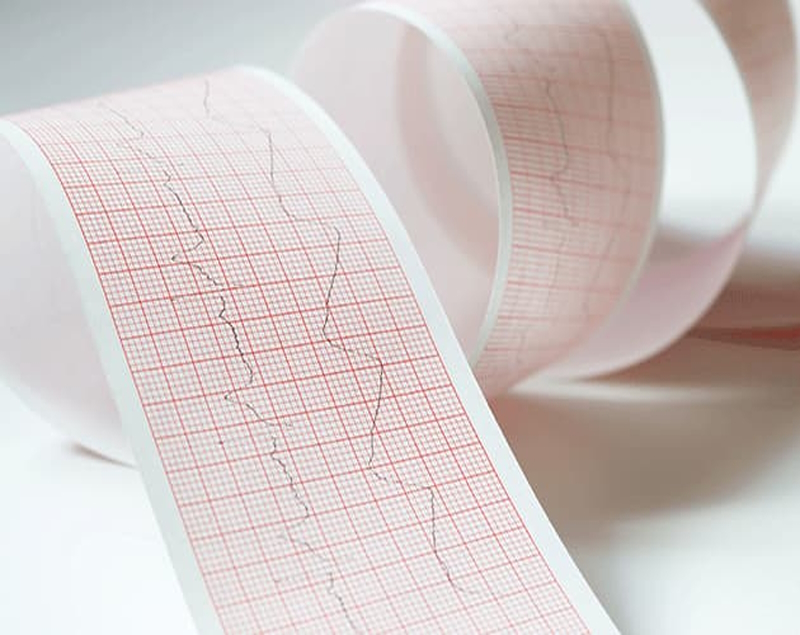Electrocardiogram
Electrocardiogram | Hong Kong Asia Heart Centre
The ECG is used to assess heart function. Patient whose complains of chest pain or shortness of breath will often have an ECG as one of the first tests to help determine if there is an acute myocardial infarction or heart attack present. Even if there is no heart attack, the ECG can help decide whether the pain is due to angina or narrowing of blood vessels to the heart muscle (atherosclerosis). It is important to realize that an initial ECG may be normal even if there is heart disease present. Serial ECGs may be needed over time to find abnormality.
Suitability:
This investigation is suitable for all of you.
Proccess:
We will first ask you to lie flat on the examination bed and roll up your top above your chest.
Before the examination, the nurse will stick some electrodes over your chest area, your hands and feet.
You need to lie still and not to talk, breath normally and relax during ECG recording. This may help us to obtain an accurate record.
Before the examination, the nurse will stick some electrodes over your chest area, your hands and feet.
You need to lie still and not to talk, breath normally and relax during ECG recording. This may help us to obtain an accurate record.
Benefits:
An electrocardiogram is a safe, painless test. There are no known risks associated with the ECG. The benefit of an ECG is that it helps your doctor better understand how your heart is working or how medications or a pacemaker affect your heart.
Limitations:
The ECG is a static picture, it may not reflect severe underlying heart problems at a time when the patient is not having any symptoms. The most common example of this is in a patient with a history of intermittent chest pain due to severe underlying coronary artery disease. This patient may have an entirely normal ECG at a time when he or she is not experiencing any symptoms. In such instances, the ECG recorded during an exercise stress test may reflect the underlying abnormalities while the ECG taken at rest may be normal.
The ECG is used to assess heart function. Patient whose complains of chest pain or shortness of breath will often have an ECG as one of the first tests to help determine if there is an acute myocardial infarction or heart attack present. Even if there is no heart attack, the ECG can help decide whether the pain is due to angina or narrowing of blood vessels to the heart muscle (atherosclerosis). It is important to realize that an initial ECG may be normal even if there is heart disease present. Serial ECGs may be needed over time to find abnormality.
Suitability:
This investigation is suitable for all of you.
Proccess:
We will first ask you to lie flat on the examination bed and roll up your top above your chest.
Before the examination, the nurse will stick some electrodes over your chest area, your hands and feet.
You need to lie still and not to talk, breath normally and relax during ECG recording. This may help us to obtain an accurate record.
Before the examination, the nurse will stick some electrodes over your chest area, your hands and feet.
You need to lie still and not to talk, breath normally and relax during ECG recording. This may help us to obtain an accurate record.
Benefits:
An electrocardiogram is a safe, painless test. There are no known risks associated with the ECG. The benefit of an ECG is that it helps your doctor better understand how your heart is working or how medications or a pacemaker affect your heart.
Limitations:
The ECG is a static picture, it may not reflect severe underlying heart problems at a time when the patient is not having any symptoms. The most common example of this is in a patient with a history of intermittent chest pain due to severe underlying coronary artery disease. This patient may have an entirely normal ECG at a time when he or she is not experiencing any symptoms. In such instances, the ECG recorded during an exercise stress test may reflect the underlying abnormalities while the ECG taken at rest may be normal.
Share


